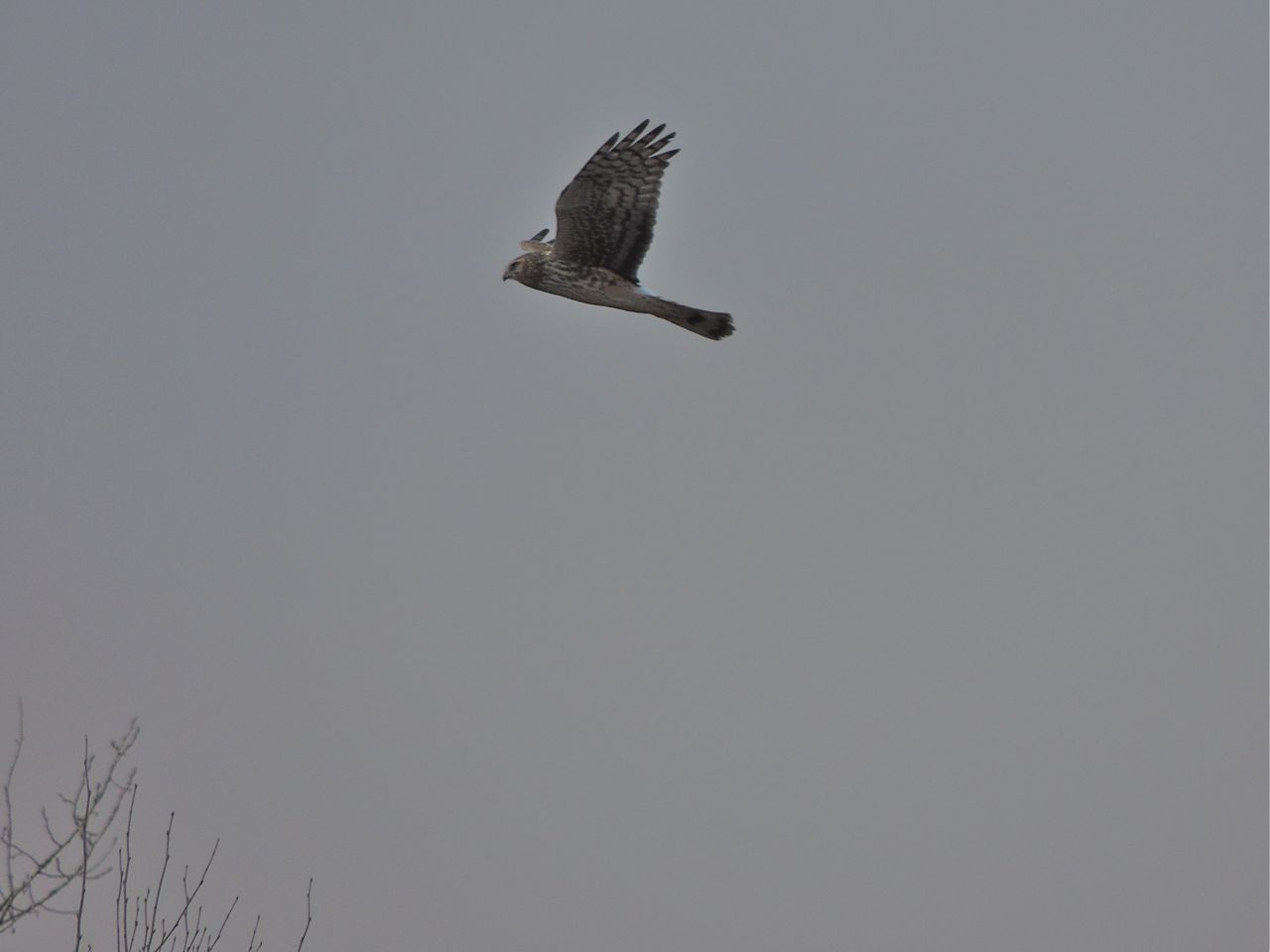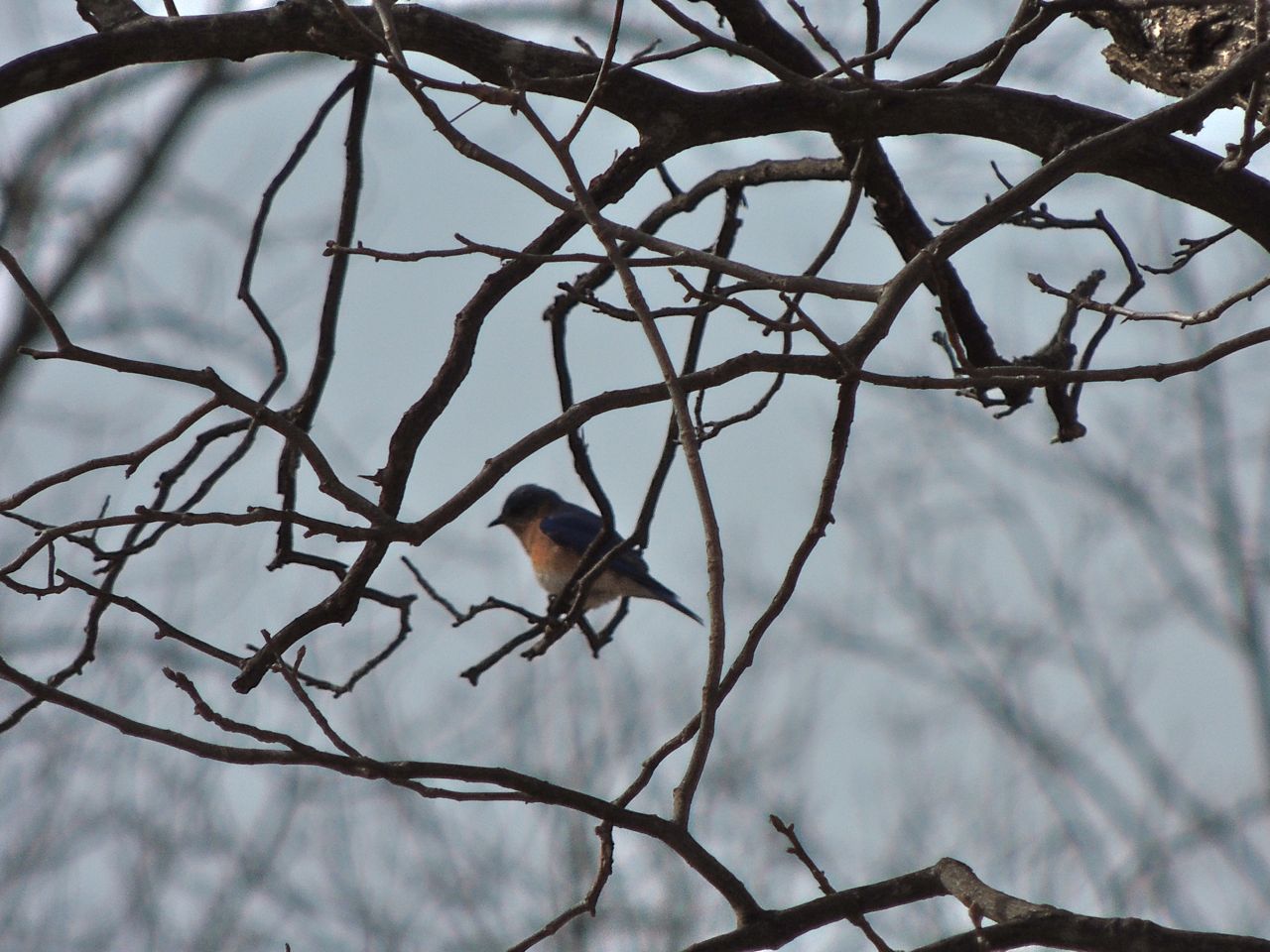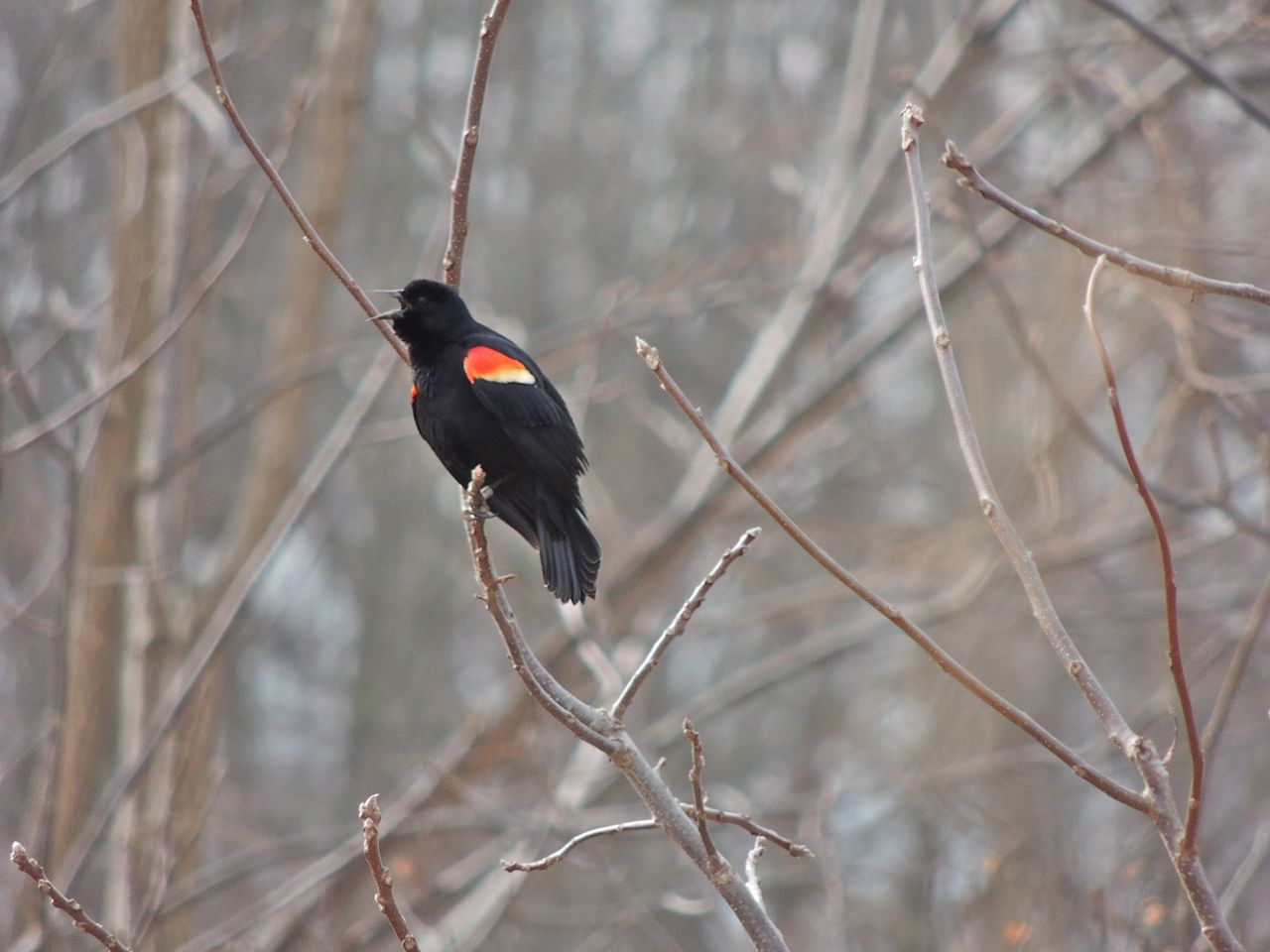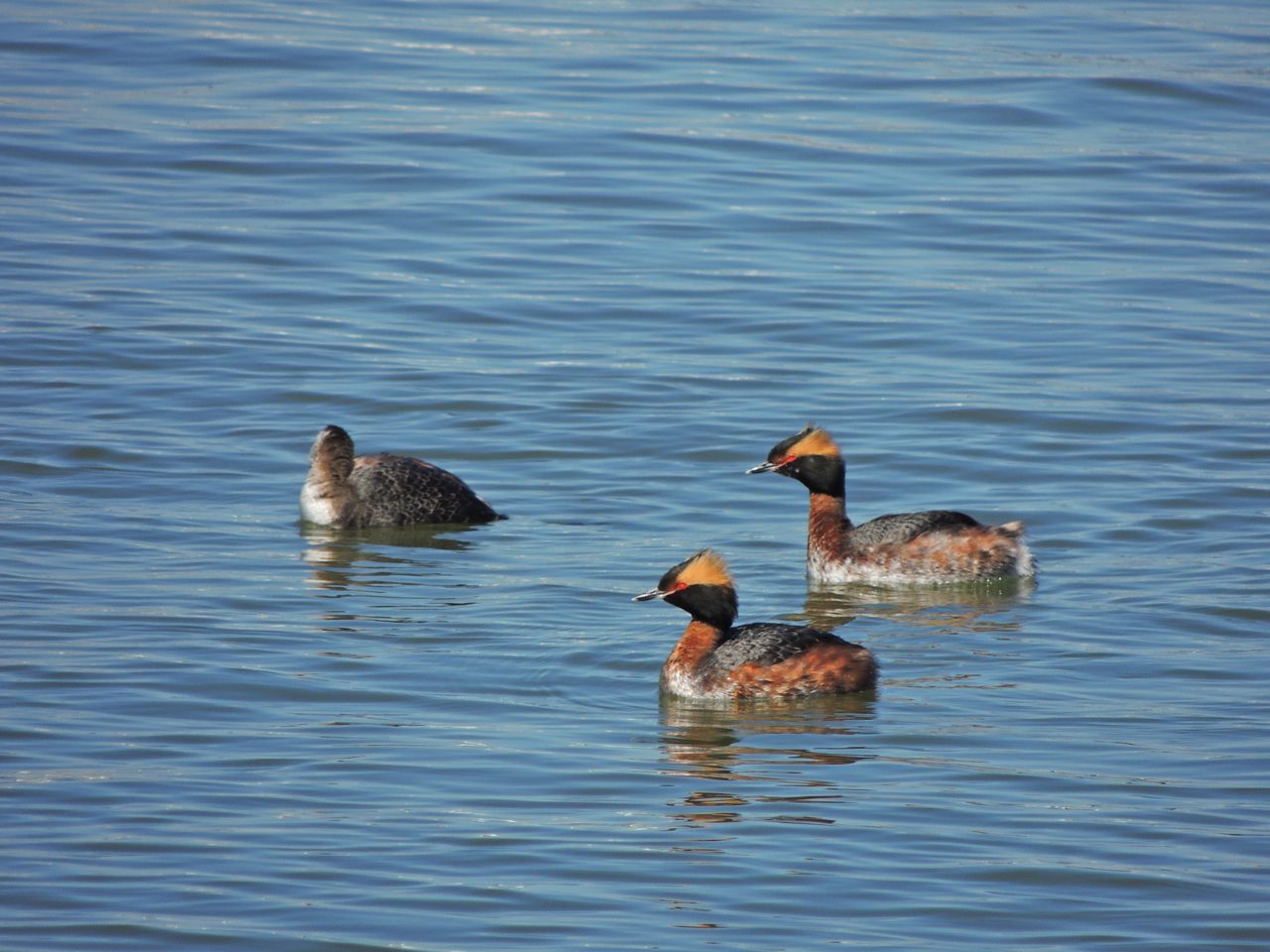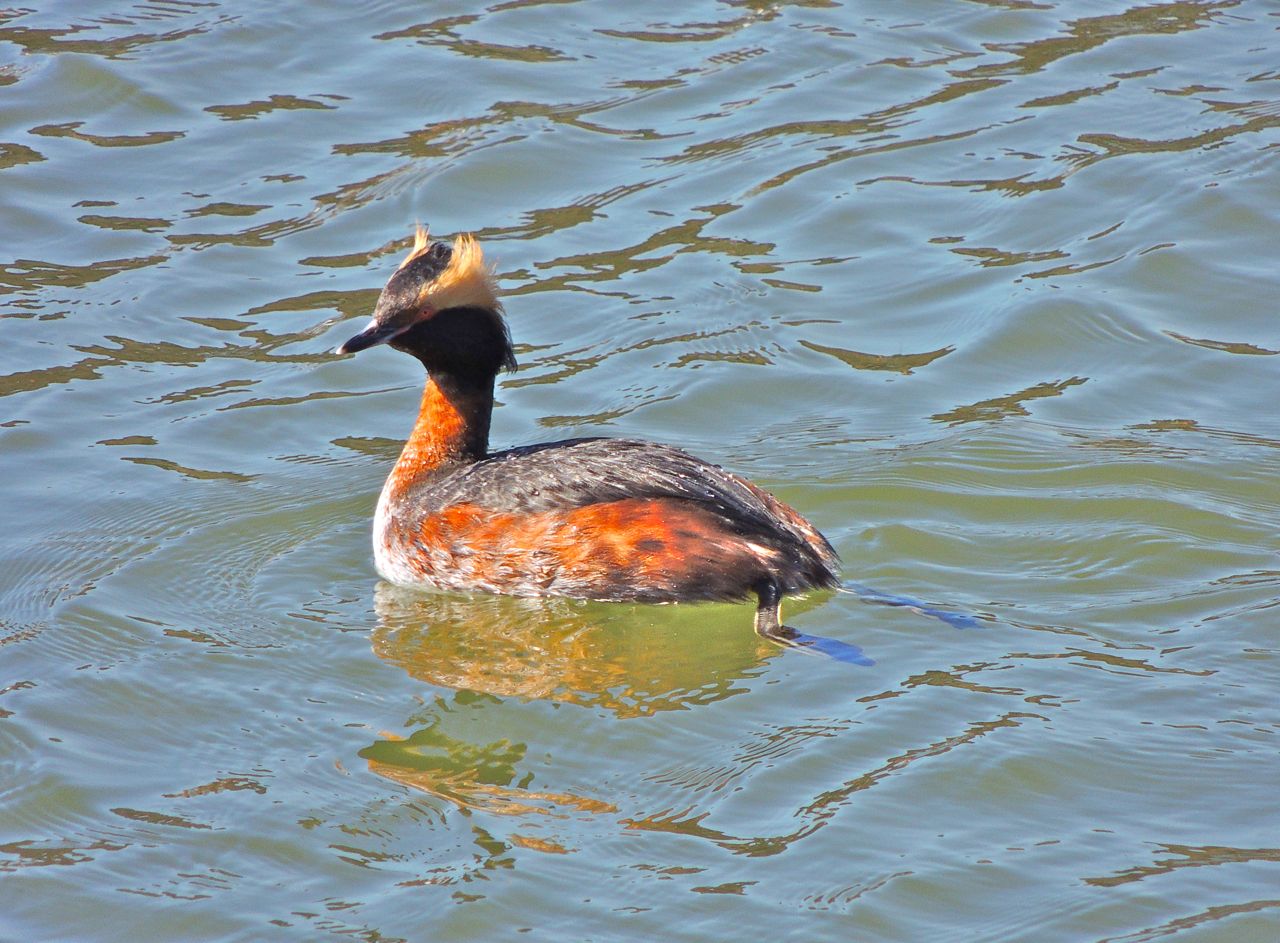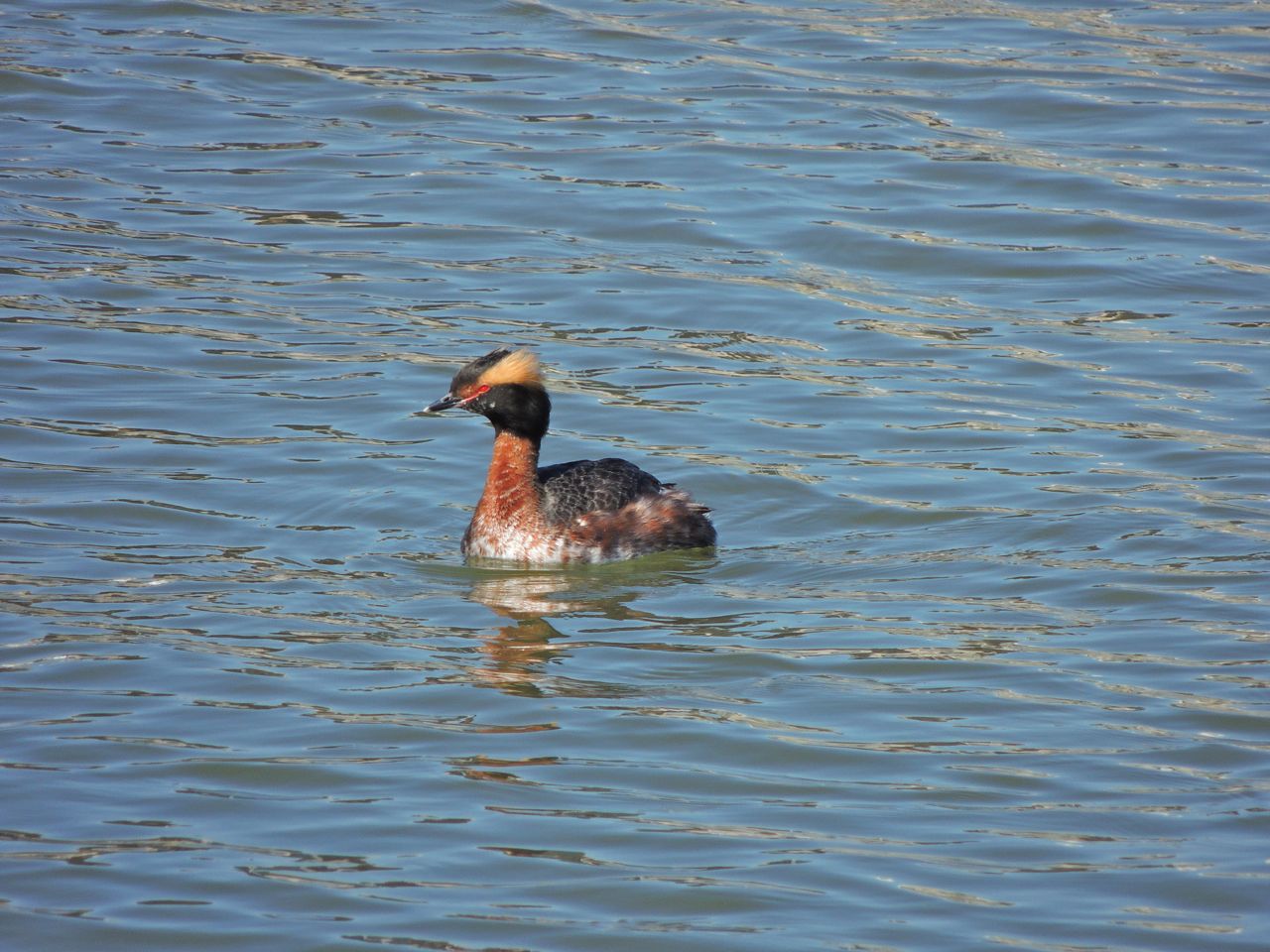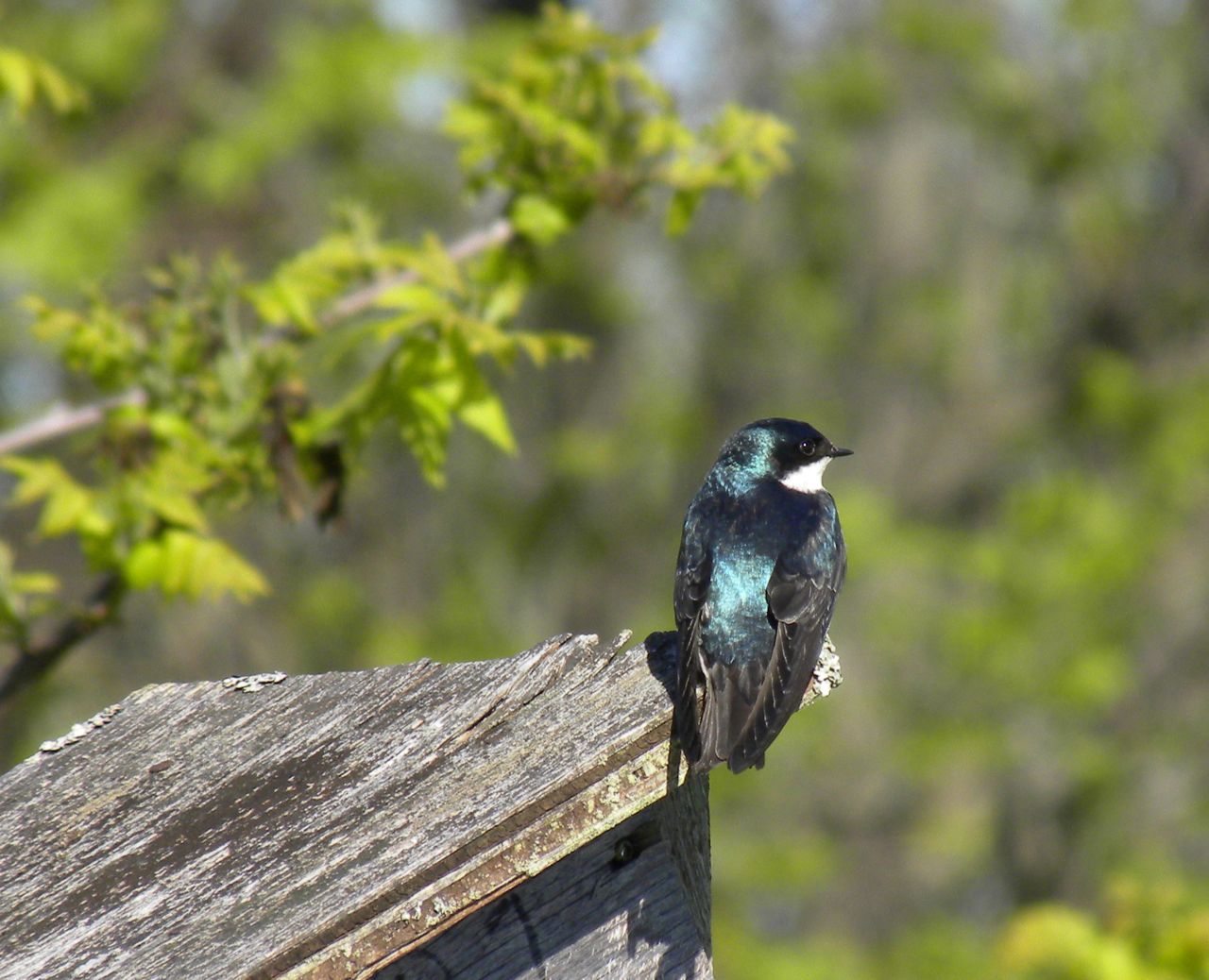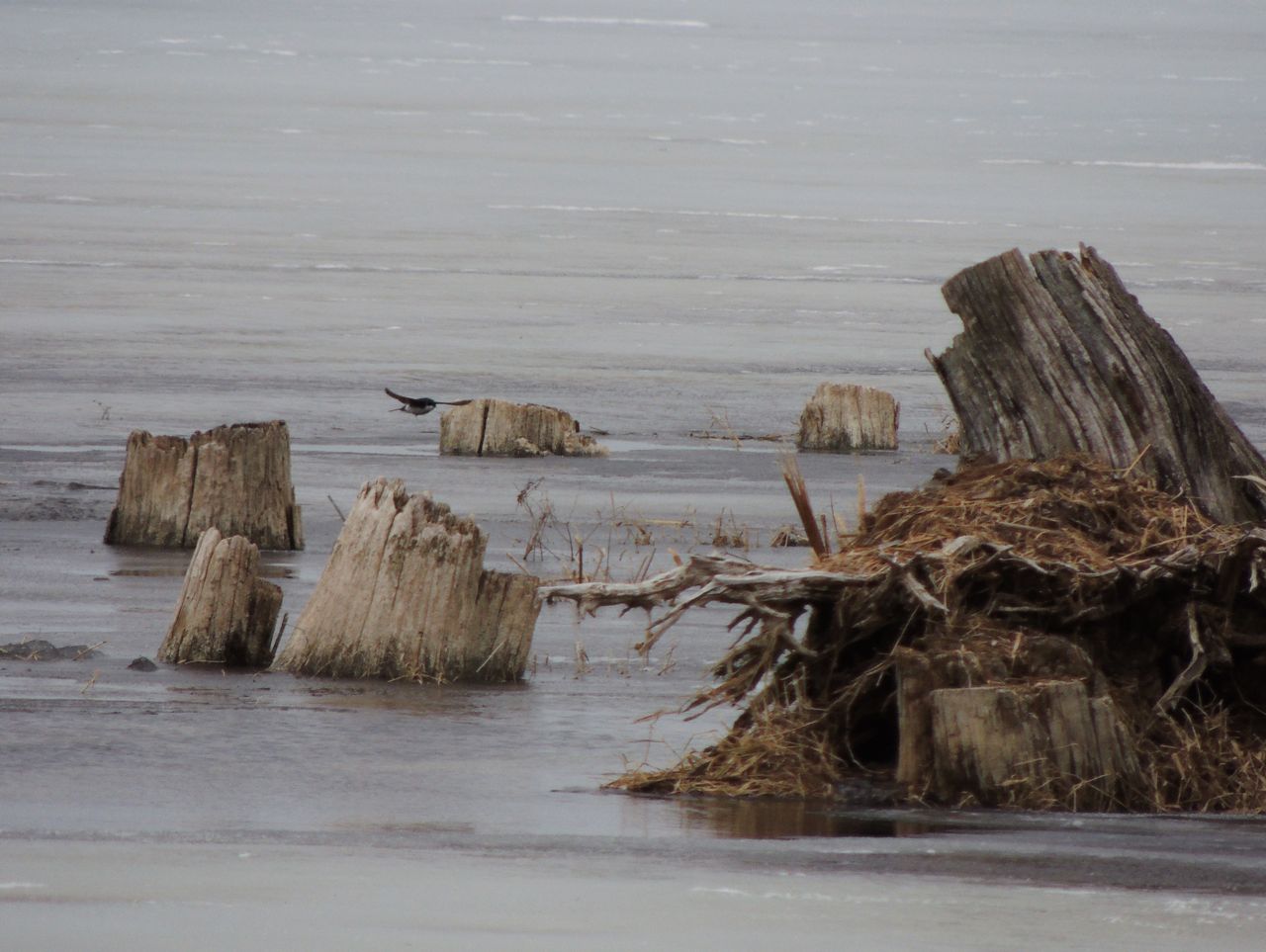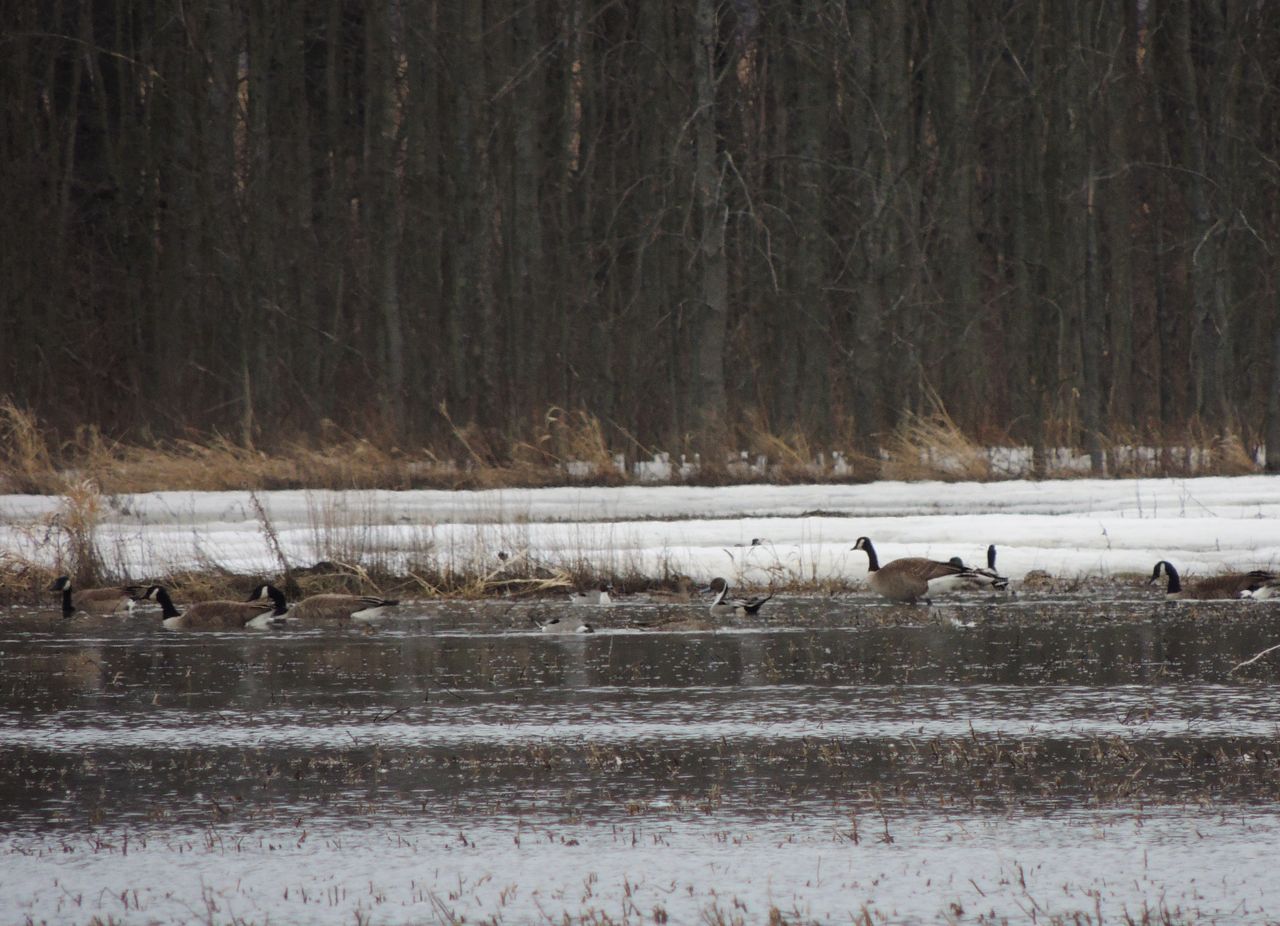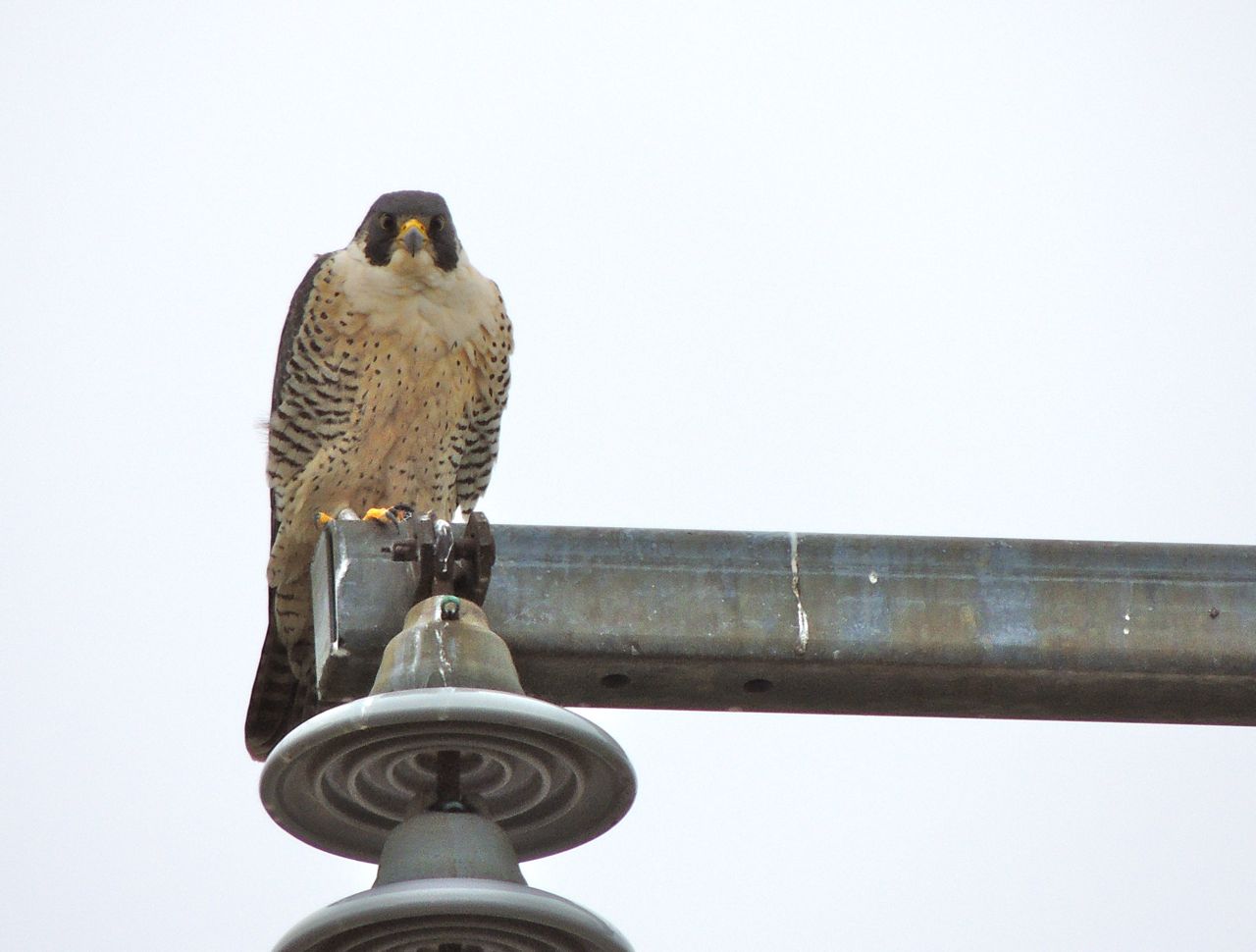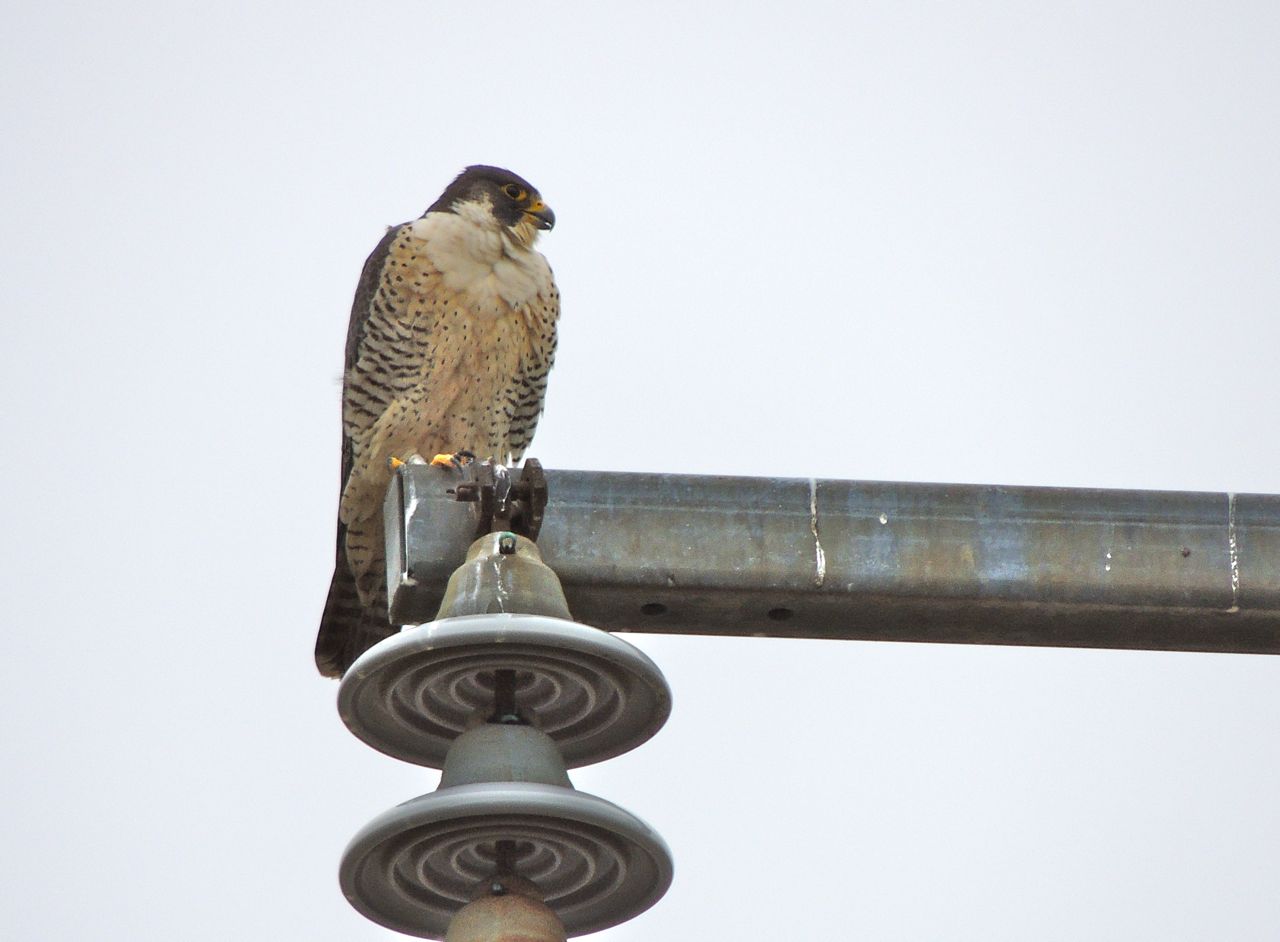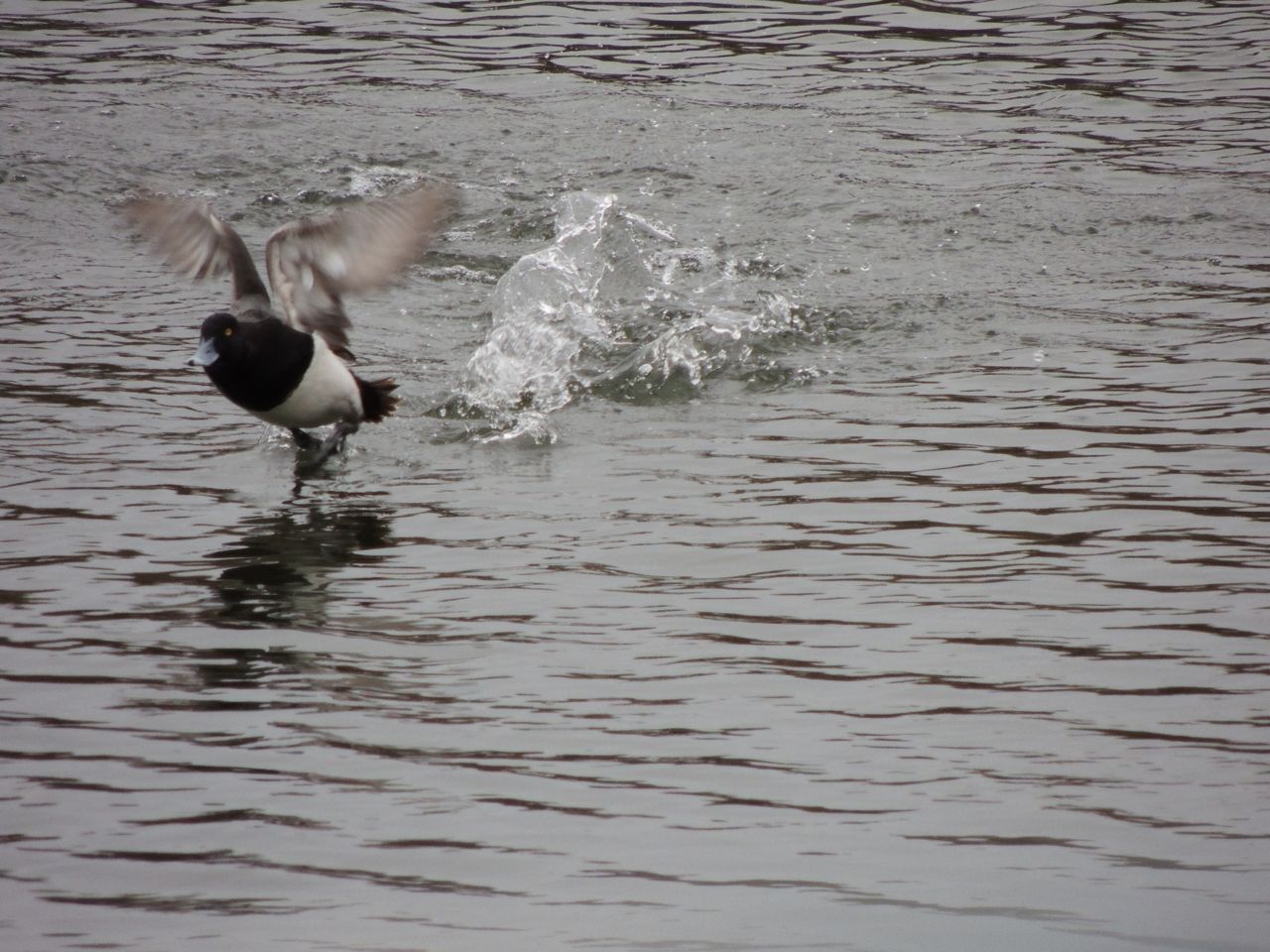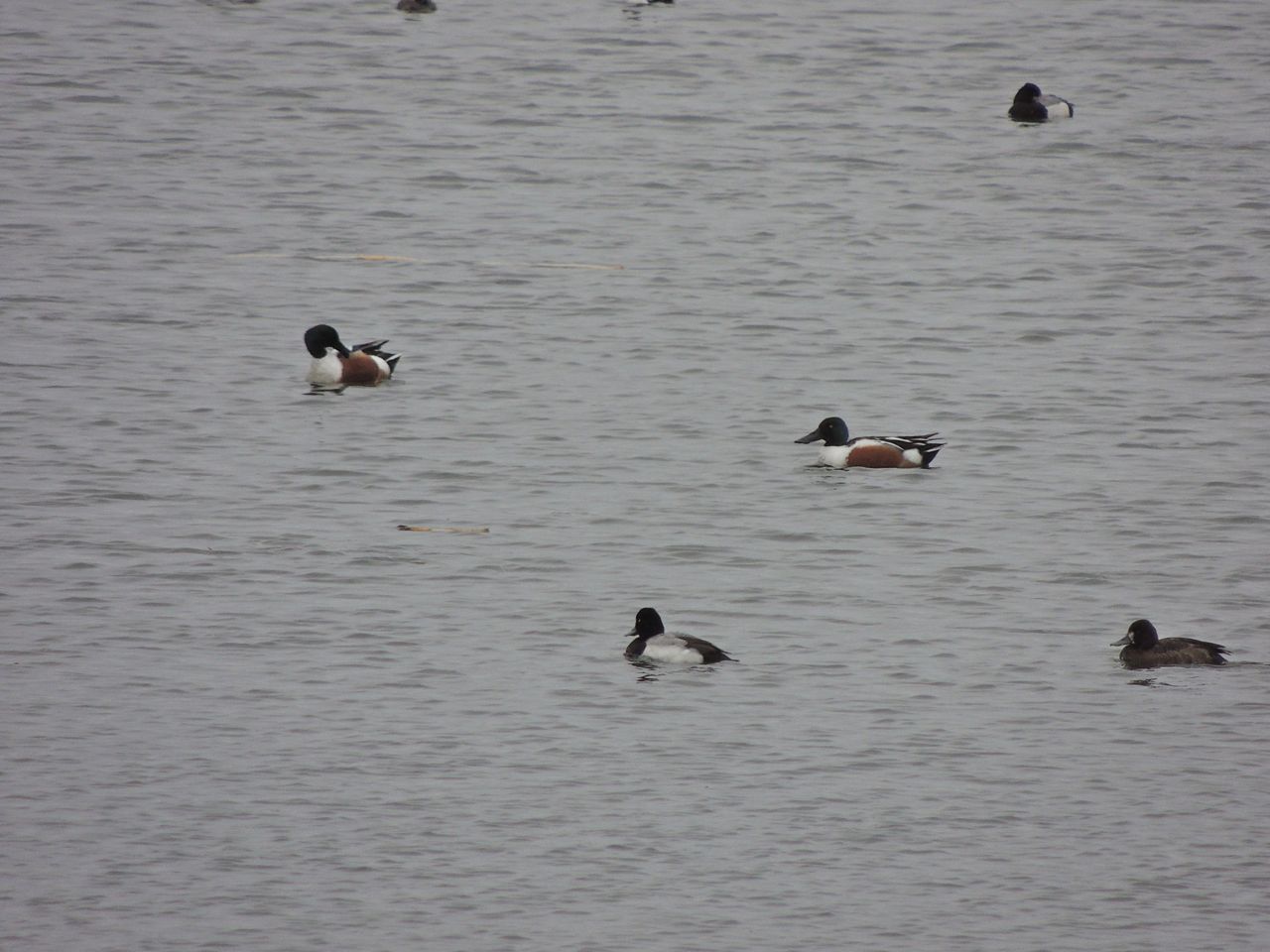10 April 2014. Badenoch ON. I tried for more Rusty Blackbirds this afternoon but once again came up empty. There were few small birds to be seen anywhere, it could well have been the howling force five westerly wind that did it. The sky held many Turkey Vultures tossed around like loose garbage bags and in a quiet wooded pond I found two anxious looking pairs of Hooded Mergansers.
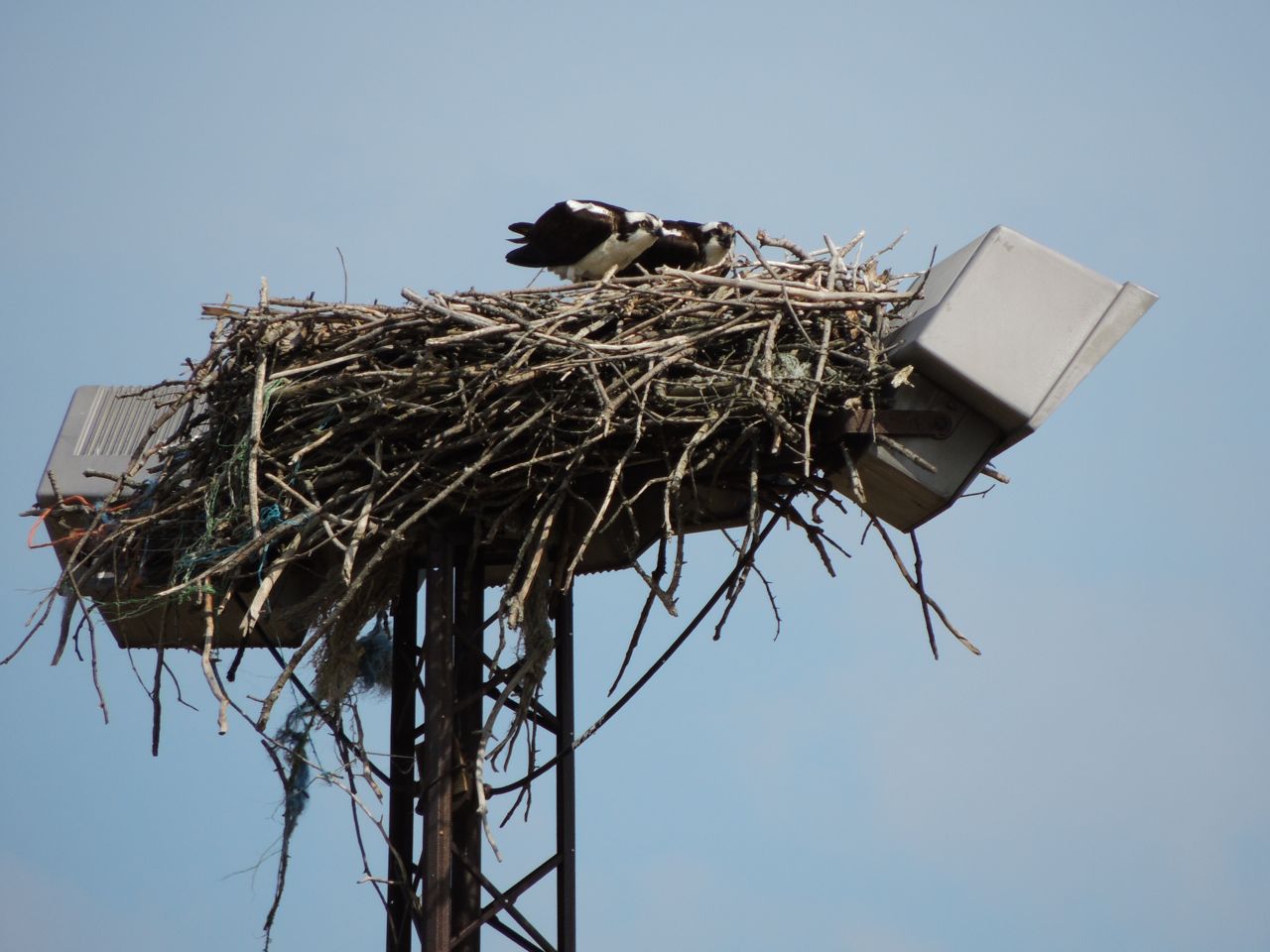
My search for Rusty Blackbirds took me past a dusty soccer pitch where, for many years, a pair of Ospreys has nested atop a floodlight structure. Their overbuilt straggly nest survives from year to year and today, with the winter’s snow cover barely gone, both birds had returned and were crouching on it, facing into the wind and holding on. I watched for a while until one stood up, opened its wings and lifted off, in control despite the wind, going fishing.
A little further down the road as I scanned a wide marshy area I noticed a distant Northern Harrier rocking and sliding in the buffeting gale. Sometimes it just works out that the bird I’m watching, instead of becoming more distant, draws closer and somehow holds a pose long enough for a decent photograph. I’m not really talking about the easy shots like waterfowl or birds lured by ready food, but birds on the wing. This Northern Harrier did it right for me, despite the pitching and bucking westerly; it came closer until, to my disbelief, it gave me time to arm the camera and get off a hopeful shot.
And so My Bird of the Day came to me on a platter, a glorious female Northern Harrier, here she is.
